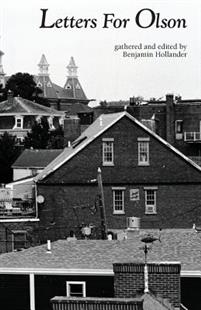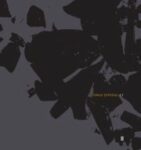Beskrivelse
Letters addressed to Charles Olson, author of The Maximus Poems.
Charles Olson was a second generation American modernist poet who was a link between earlier figures such as Ezra Pound and William Carlos Williams and the New American poets, which includes the New York School, the Black Mountain School, the Beat poets, and the San Francisco Renaissance. Consequently, many postmodern groups, such as the poets of the Language School, include Olson as a primary and precedent figure. He described himself not so much as a poet or writer but as «an archeologist of morning.»
Olson’s first book was Call Me Ishmael (1947), a study of Herman Melville’s novel Moby Dick which was a continuation of his M.A. thesis from Wesleyan University.[5] In Projective Verse (1950), Olson called for a poetic meter based on the breath of the poet and an open construction based on sound and the linking of perceptions rather than syntax and logic. The poem «The Kingfishers», first published in 1949 and collected in his first book of poetry, In Cold Hell, in Thicket (1953), is an application of the manifesto.
His second collection, The Distances, was published in 1960. Olson served as rector of the Black Mountain College from 1951 to 1956. During this period, the college supported work by John Cage, Robert Creeley, Allen Ginsberg, Robert Duncan, Fielding Dawson, Cy Twombly, Jonathan Williams, Ed Dorn, Stan Brakhage and many other members of the 1950s American avant garde. Olson is listed as an influence on artists including Carolee Schneemann and James Tenney.[6]
Olson’s reputation rests in the main on his complex, sometimes difficult poems such as «The Kingfishers», «In Cold Hell, in Thicket», and The Maximus Poems, work that tends to explore social, historical, and political concerns. His shorter verse, poems such as «Only The Red Fox, Only The Crow», «Other Than», «An Ode on Nativity», «Love», and «The Ring Of», manifest a sincere, original, accessible, emotionally powerful voice. «Letter 27 [withheld]» from The Maximus Poems weds Olson’s lyric, historic, and aesthetic concerns. Olson coined the term postmodern in a letter of August 1951 to his friend and fellow poet, Robert Creeley.
In 1950, inspired by the example of Pound’s Cantos (though Olson denied any direct relation between the two epics), Olson began writing The Maximus Poems, a project that was to remain unfinished at the time of his death. An exploration of American history in the broadest sense, Maximus is also an epic of place, Massachusetts and specifically the city of Gloucester where Olson had settled. Dogtown, the wild, rock-strewn centre of Cape Ann, next to Gloucester, is an important place in The Maximus Poems. (Olson used to write outside on a tree stump in Dogtown.) The whole work is also mediated through the voice of Maximus, based partly on Maximus of Tyre, an itinerant Greek philosopher, and partly on Olson himself. The final, unfinished volume imagines an ideal Gloucester in which communal values have replaced commercial ones.




